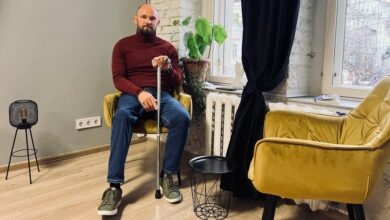B.C. museum reopens after 18-month seismic upgrade

Working on the $40-million seismic upgrade for one of Canada’s most prominent museums was an intensely personal experience for architect Nick Milkovich.
He started his career under renowned architect Arthur Erickson and worked on some aspects of the award-winning concrete and glass design of the Museum of Anthropology on the University of British Columbia campus before the building opened in 1976.
After an 18-month closure to implement “cutting-edge” base-isolation upgrades for the Great Hall, Milkovich said he felt an immense responsibility to carry forward his mentor’s vision in preserving the iconic structure’s design through the entire process.
“His studio gave me the opportunity to become a decent architect,” Milkovich said of Erickson at the museum on Tuesday. “So, it’s gratitude, and it’s also an obligation to that learning session that I had in that wonderful studio and the people I met.”
On Thursday, the Museum of Anthropology will reopen with new exhibits after the seismic upgrade, which features a system that would allow it to survive a once-in-2,500-year earthquake.
UBC facilities director of project services Jay Hiscox said the seismic upgrade at the museum was challenging, given Erickson’s “unconventional” design where adding new support would have “complicated the building and lost its essence.”
Hiscox and Milkovich agreed that in order to preserve the design language of the Great Hall, the only method available to them was the base-isolation, which is more commonly used in earthquake zones such as Japan and Turkey.
“It buys you the opportunity to actually have it still look like the old (museum), but it’s completely re-engineered,” Hiscox said. “The beams and columns that you see are completely re-engineered from what was there before.”
Officials say it’s the first time a Canadian museum has been retrofitted with the technology, which uses movement joints at the bottom of the building to limit the transfer of ground shifts to the structure.
The museum was identified as a high priority for seismic upgrades in 2017, and director Susan Rowley said they took it as an opportunity to renew the space by adding new exhibits, while refocusing the Indigenous artifacts as part of “living, vibrant, sovereign cultures.”
It houses nearly 50,000 works from almost every part of the world, but the museum is best known for its sizable collection of Indigenous northwest coast art, including a stunning display of totem poles in the Great Hall.
“One of things we had understood when the construction project first started was that our closure would be a relatively short period of time,” Rowley said. “Then, when we understood it would actually be a much longer period of time, we as an institution were thinking, what does that give us the opportunity to do? How can we reimagine the work that we are doing?”
That process is reflected in the new exhibits, including one entitled “To Be Seen, To Be Heard,” focusing on First Nations Peoples in public spaces representing their cultures during Canada’s colonial past.
“We’re all thinking about reconciliation and decolonization and what does that mean, and trying to understand that history, particularly for many of us who grew up not knowing this history, although it’s the history of the land in which we live,” Rowley said. “It’s trying to come to terms with what were we not hearing? How were we not hearing it?”
The museum will also have more of a focus on the artifacts on display in terms of their relationship to Indigenous Peoples and cultures in society, adding to the old perspective of highlighting descriptions and facts specifically on the objects themselves, Rowley said.
“What we hope is that people come through the museum, and they are so interested and question themselves, and think about received wisdom and stereotypes,” she said. “We hope they go away open to looking at things in a brand new way.”
Milkovich said many of the people he met while working with Erickson still gather regularly, and he’s looking forward to their reactions to the upgraded Great Hall.
“That group of folks, we meet together, reminisce and talk about what we were doing, and I’m going to be taking them through the building,” Milkovich said with a big smile.
This report by The Canadian Press was first published June 11, 2024.




